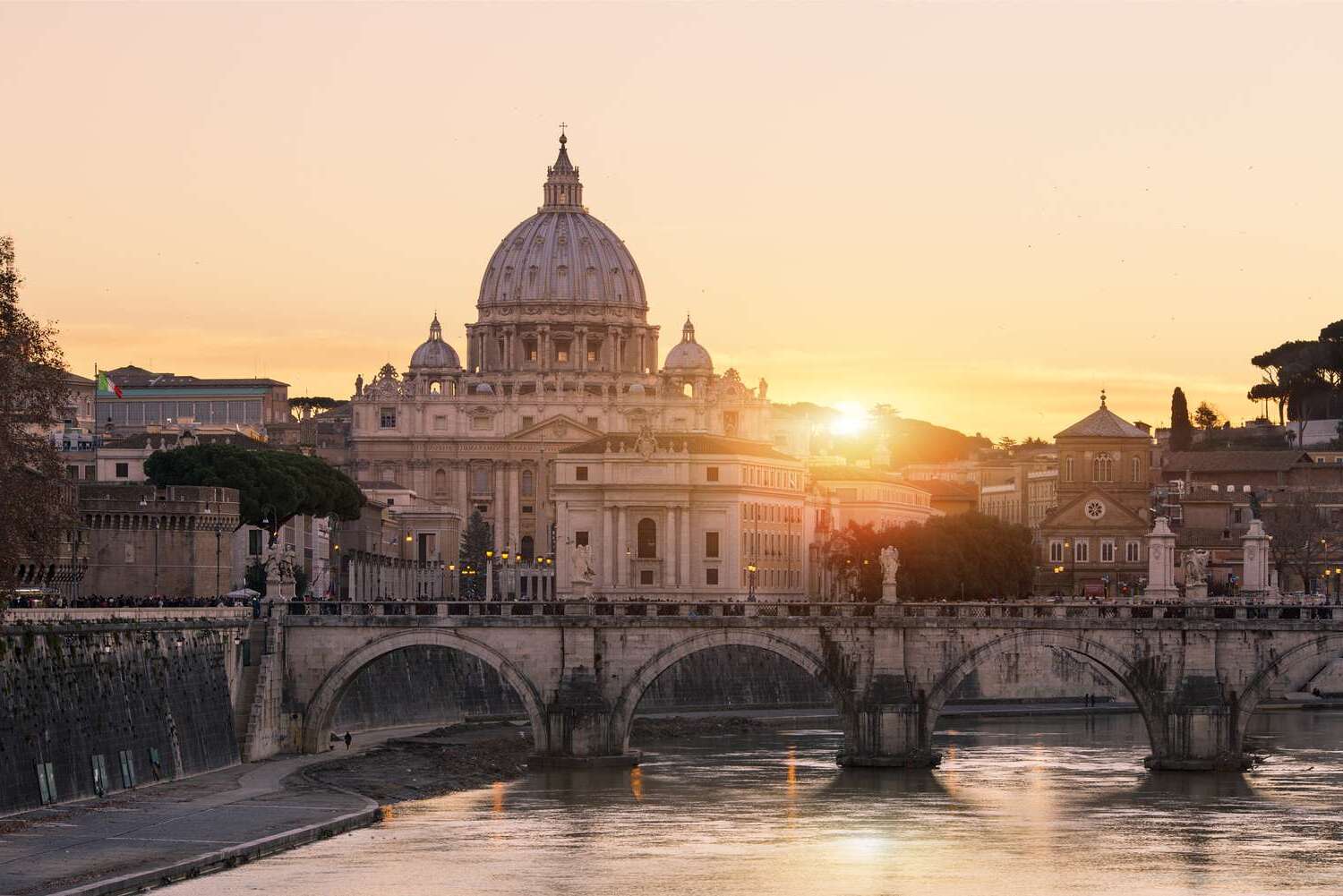
What makes Roman Catholicism one of the most influential religions in the world? Roman Catholicism, with over 1.3 billion followers, stands as one of the oldest and largest Christian denominations. Its rich history, intricate theology, and global reach have shaped cultures and societies for centuries. From the Pope's leadership to the seven sacraments, the faith's practices and beliefs offer a unique spiritual journey. The Church's commitment to education, social justice, and charitable works further underscores its impact. Whether through grand cathedrals, sacred rituals, or community service, Roman Catholicism continues to play a pivotal role in the lives of millions worldwide.
Origins and Structure of Roman Catholicism
Roman Catholicism is one of the oldest and largest Christian denominations. Its history, traditions, and global influence make it a fascinating subject.
-
Origins: Roman Catholicism began with the early Christian Church, tracing its roots back to the apostles of Jesus Christ. The term "Roman Catholic" was first used in the 16th century to distinguish it from other Christian groups.
-
Papacy: The Pope, currently Pope Francis, is the spiritual leader of the Roman Catholic Church. He is considered the successor of Saint Peter, one of Jesus' twelve apostles, and serves as the Bishop of Rome.
-
Hierarchy: The Church has a hierarchical structure, with the Pope at the top, followed by cardinals, bishops, priests, and deacons. Each level has specific roles and responsibilities within the Church.
Core Beliefs and Practices
Roman Catholics adhere to a set of core beliefs and practices that shape their faith and daily lives.
-
Sacraments: Roman Catholics believe in seven sacraments: Baptism, Confirmation, Eucharist, Penance, Anointing of the Sick, Holy Orders, and Matrimony. These sacraments are essential for spiritual growth and salvation.
-
Bible and Tradition: Roman Catholics recognize the authority of both Scripture and Tradition. They view the Bible as the inspired word of God and also value the teachings and practices of the early Church.
-
Mary and the Saints: Mary, the mother of Jesus, and the saints are venerated by Roman Catholics, who believe they can intercede on behalf of the faithful. This practice is based on the belief in the communion of saints.
-
Eucharist: The Eucharist, also known as the Mass or Holy Communion, is central to Roman Catholic worship. It is believed to be the real presence of Christ, where bread and wine are transformed into his body and blood.
-
Prayer and Devotion: Roman Catholics engage in various forms of prayer and devotion, including the Rosary, Stations of the Cross, and Adoration of the Blessed Sacrament. These practices deepen spiritual life and foster a closer relationship with God.
Cultural and Artistic Contributions
Roman Catholicism has significantly influenced art, architecture, and culture throughout history.
-
Church Architecture: Roman Catholic churches are known for their grand architecture, often featuring intricate designs, stained glass windows, and ornate decorations. These structures symbolize faith and community.
-
Liturgical Calendar: The Church follows a liturgical calendar with various feasts and observances throughout the year. These celebrations honor saints, significant events in Christian history, and liturgical seasons like Advent and Lent.
-
Sacred Heart Devotion: The Sacred Heart of Jesus is a popular devotion emphasizing Christ's love for humanity. It is often depicted in art and iconography.
-
Immaculate Conception: The doctrine of the Immaculate Conception states that Mary was born without original sin. This dogma was formally defined by Pope Pius IX in 1854 and is celebrated on December 8th.
-
Assumption of Mary: The Assumption of Mary states that she was taken up into heaven body and soul at the end of her earthly life. This doctrine was declared dogma by Pope Pius XII in 1950 and is celebrated on August 15th.
Education and Social Teachings
The Roman Catholic Church places a strong emphasis on education and social justice.
-
Catholic Education: The Church has numerous educational institutions worldwide, providing both primary and higher education. These institutions often include a religious component in their curriculum.
-
Social Teachings: The Church's social teachings emphasize solidarity, justice, and compassion. These principles guide Catholics in their interactions with society and advocate for the rights of the marginalized.
-
Charitable Works: Roman Catholics are encouraged to engage in charitable works, such as volunteering at soup kitchens, participating in mission trips, and supporting organizations that help the poor and vulnerable.
Ecumenism and Missionary Work
The Church actively promotes unity among different Christian denominations and engages in missionary work.
-
Ecumenism: The Church seeks to promote unity among different Christian denominations through dialogue and interfaith initiatives.
-
Missionary Work: The Church has a long history of missionary work, with many orders dedicated to spreading the Gospel worldwide. This work continues today through various missionary organizations and programs.
Unique Practices and Global Influence
Certain practices and the Church's global reach make Roman Catholicism unique.
-
Clerical Celibacy: Clerical celibacy requires priests and bishops to remain unmarried. This practice is rooted in early Church tradition and is seen as a way to dedicate one's life fully to God.
-
Vatican City: Vatican City is an independent city-state within Rome, Italy. It serves as the headquarters of the Roman Catholic Church and houses institutions like the Vatican Museums and the Sistine Chapel.
-
Vatican II: The Second Vatican Council (Vatican II), held from 1962 to 1965, aimed to reform the Church and promote greater engagement with the modern world.
-
Liturgy and Worship: Roman Catholic worship includes the Mass, sacraments, and various devotional practices. The liturgy is a way to participate in the life of Christ and express devotion to God.
-
Canon Law: The Church has its own canon law governing various aspects of Church life, including sacraments, marriage, and ecclesiastical discipline. This law is based on tradition and Scripture.
Religious Orders and Catechism
The Church is home to numerous religious orders and has a comprehensive guide to its doctrine.
-
Religious Orders: The Church includes many religious orders, each with its own charism and mission. These orders consist of monks, nuns, priests, and laypeople dedicated to various forms of service and contemplation.
-
Catechism: The Catechism of the Catholic Church is a comprehensive guide to Catholic doctrine and practice. It provides an overview of the faith and serves as a resource for both clergy and laity.
Art, Music, and Pilgrimages
Roman Catholicism has a rich tradition of art, music, and pilgrimages.
-
Bible Translations: The Church has been involved in various Bible translations, ensuring Scripture is accessible in different languages. The Douay-Rheims Bible and the New American Bible are notable examples.
-
Art and Iconography: Roman Catholic art and iconography are renowned for their beauty and spiritual depth. From the Sistine Chapel's ceiling to statues of saints in local churches, these works reflect the faith and traditions of the Church.
-
Music and Liturgy: Music plays a significant role in Roman Catholic liturgy, with hymns, chants, and Gregorian chant being integral parts of worship. The Church has a rich musical heritage enhancing the spiritual experience of the faithful.
-
Pilgrimages: Pilgrimages are an important aspect of Catholic devotion, with many faithful traveling to sacred sites like Lourdes, Fatima, and the Holy Land. These journeys offer opportunities for spiritual growth and reflection.
Media, Charities, and Environmental Concerns
The Church has a robust media presence, engages in charitable works, and emphasizes ecological concerns.
-
Catholic Media: The Church has a strong media presence, including newspapers, magazines, radio stations, and television networks. These outlets provide news, education, and entertainment to Catholics worldwide.
-
Catholic Charities: Catholic Charities is a global network of organizations providing humanitarian services such as food banks, shelters, and disaster relief. These efforts reflect the Church's commitment to serving the poor and vulnerable.
-
Ecological Concerns: The Church increasingly emphasizes ecological concerns, advocating for environmental protection and sustainability. This includes initiatives like reducing carbon emissions and promoting sustainable agriculture practices.
Interfaith Dialogue and Global Reach
The Church engages in interfaith dialogue and has a significant global presence.
-
Interfaith Dialogue: Roman Catholics engage in interfaith dialogue with other religions, seeking to understand and respect the beliefs of others. This dialogue aims to promote mutual understanding and cooperation in addressing common challenges.
-
Global Reach: With over 1.3 billion adherents, the Roman Catholic Church is one of the largest religious organizations in the world. Its global reach extends to every continent, with a significant presence in Latin America, Europe, Africa, Asia, and North America.
-
Influence: Roman Catholicism continues to play a significant role in the lives of millions worldwide through its sacraments, charitable works, and artistic expressions.
The Impact of Roman Catholicism
Roman Catholicism, with its deep roots and extensive traditions, has shaped the lives of millions worldwide. From the Pope's leadership to the seven sacraments, each aspect plays a crucial role in the faith. The veneration of Mary and the saints, the importance of the Eucharist, and the rich liturgical calendar highlight the Church's spiritual depth. Its commitment to education, social teachings, and charitable works showcases a dedication to improving society. The Church's influence extends to art, architecture, music, and media, reflecting its cultural significance. With a presence on every continent, Roman Catholicism continues to be a major force in the world. Whether through missionary work, interfaith dialogue, or ecological concerns, the Church remains active in addressing global challenges. Roman Catholicism's enduring legacy and ongoing contributions make it a vital part of the religious and cultural landscape.
Was this page helpful?
Our commitment to delivering trustworthy and engaging content is at the heart of what we do. Each fact on our site is contributed by real users like you, bringing a wealth of diverse insights and information. To ensure the highest standards of accuracy and reliability, our dedicated editors meticulously review each submission. This process guarantees that the facts we share are not only fascinating but also credible. Trust in our commitment to quality and authenticity as you explore and learn with us.


